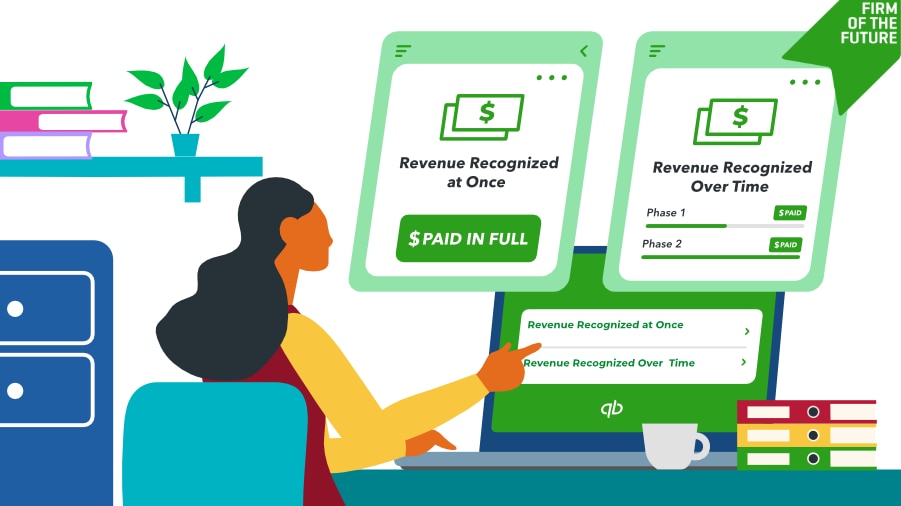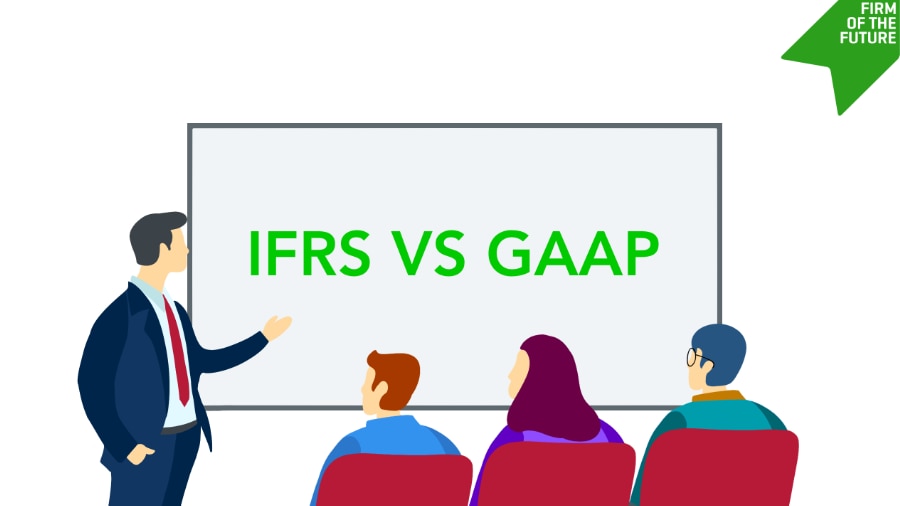If you had a lemonade stand as a kid, the rules for recognizing revenue were pretty simple: Someone handed you cash and you handed them a glass of lemonade. However, most businesses today aren’t so simple; so FASB and IASB joined forces to develop new guidance on revenue recognition.
This new guidance eliminates the ad hoc, industry-specific, rules-based guidance of legacy GAAP in favor of a principles-based approach. This approach was codified by FASB as ASC 606, and by IASB as IFRS 15. This is effective for public companies for periods beginning Jan. 1, 2018. Due to the COVID-19 pandemic, FASB delayed the effective date for private companies and not-for-profit entities until 2020.
FASB developed a five-step process for recognizing revenue. In this post, I’ll focus on the fifth step, which is how to determine when revenue should be recognized.
Revenue recognition over time: Three criteria
Revenue can be either recognized at a point in time or over a period of time. ASC 606 lays out three criteria for determining whether revenue should be recognized over time. If the contract meets any one of these three, then revenue should be recognized over time.
- The customer receives and uses the benefits of the service at the same time that the company performs the service. Examples of this are monthly payroll processing services, electric utilities and annual gym memberships.
- Control of the asset or assets being created passes to the customer as the business performs. An example of this is an industrial warehouse being constructed on land owned by the customer.
- The product or the service has no alternative use other than its use by the customer, and there is an enforceable right to payment for work completed to date. An example of this is consulting services where the agreement includes progress billing as the work is completed.
Which point in time?
If none of these criteria apply, revenue is recognized at a point in time. The following events can be used as a cue to determine the appropriate point in time:
- The company has a present right to payment for the goods or services.
- The customer has legal title.
- The company has transferred physical possession of the asset.
- The customer has accepted the asset.
Choose a method to measure progress
When revenue is recognized over time, the business needs to choose a method to measure progress in completing the contract, and this method needs to be used consistently for similar contracts. The idea is to recognize revenue in proportion to the goods and services transferred to the customer so far.
The chosen method can be based on either outputs or inputs. An output method looks at the fair market value of goods and services transferred to the customer to date. An input method will be based on the costs for labor and materials as the business incurs them.
Uninstalled materials get a different treatment
A significant change from legacy GAAP is the method to be used in construction contracts that include installation of large components that are produced by third parties. If these large components comprise a significant portion of the cost of the whole project and are delivered to the site long before installation, the cost for those components is carved out of the whole and recognized separately, to the extent of that cost.
An example in the standards is the installation of an elevator for a total contract price of $5 million. In this example, the estimated cost for the entire contract is $4 million, of which $1.5 million is the cost of the elevator itself. If the elevator is delivered at a point when only 20% ($500,000) of the additional costs have been incurred, then including the elevator’s cost in the total would overstate progress towards completion of the project. In this situation, the entity would recognize revenue to the extent of the cost of the elevator ($1.5 million), plus 20% of the remaining revenue (20% x $3.5 million = $700,000), for a total of $2.2 million.
Under percentage of completion, the entity would have incurred 50% of the total costs and so would recognize 50% of the revenue, or $2.5 million.
This new standard has been called the biggest change in accounting since Sarbanes-Oxley. If you haven’t started learning about it and considering how it will impact your clients, you better get started soon!



